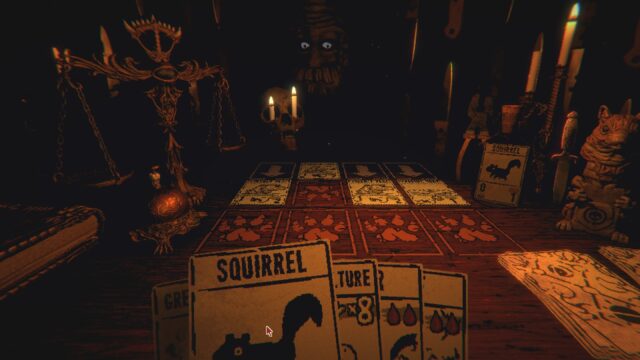Pathfinder Wrath of the Righteous Review: Fighter, Cleric, Mage, Thief, and Fox on a Dinosaur

Classic RPG from the Russian studio Owlcat. The sequel to the acclaimed Pathfinder: Kingmaker. Branching story with multiple endings; tactical battles; a “strategy” mode that allows you to control huge armies; the ability to play as a half-vampire, half-djinn, and half-angel; choices that are important for the plot… Empty promises? Surprisingly – no. Everything mentioned above is absolutely true. Pathfinder: Wrath of the Righteous It is truly beautiful, delivering everything promised in full measure and captivating for a long time. One hundred and thirty hours on Steam – and after one ending, you want to replay it again and again, try different options, builds, and solve puzzles.
As Gavin Dun, also known as Miracle of Sound, sings:
We gotta write these ten thousand lines,
We gotta add reactivity,
We gotta add some consequences,
Because we love real RPGs!

Any good RPG starts with a character creation mini-game. So, in WotR, there are plenty of creation options. 25 classes – and those are just the main ones, each with their own subclasses and specialties. You can create someone as unique as an Urban Hunter (a hunter specializing in catching criminals, with a pet dog) or a Stigmatized Witch (a witch whose gift is not a talent, but a curse, suffering from some physical ailment). Plus thirteen prestige classes, which require specific skills and abilities to unlock. Plus, there’s something called “Mythic Path choice” – this option gradually unlocks during gameplay, granting a multitude of unique skills.
Many of the classes can choose familiars (want something original? there’s a centipede familiar and a lizard familiar). Some can even have a pet that fights alongside them. You can have a wolf, a dog, a horse for riding. You can have a triceratops or a velociraptor. Yes, there are dinosaurs here! And prehistoric creatures like a smilodon and a mammoth. It’s a complete and magnificent zoo!

There are also many races. From the familiar half-elf-dwarf to the more unconventional aasimars, tieflings, and kitsune. Aasimars are people with angelic blood, golden-haired and golden-eyed. Tieflings, on the other hand, have demonic heritage, with horns and a tail. And kitsune, as you can easily understand, are foxes! Fox shapeshifters, walking on two hind legs, also with a tail (but fluffy), capable of transforming into full-fledged humans if desired.
Seriously, in Pathfinder WotR, you can play as a little fox! Even better – you can play as a little fox riding a dinosaur!
What else is needed to immediately buy the game? In my opinion, that’s all you need to know. End of the review, period.
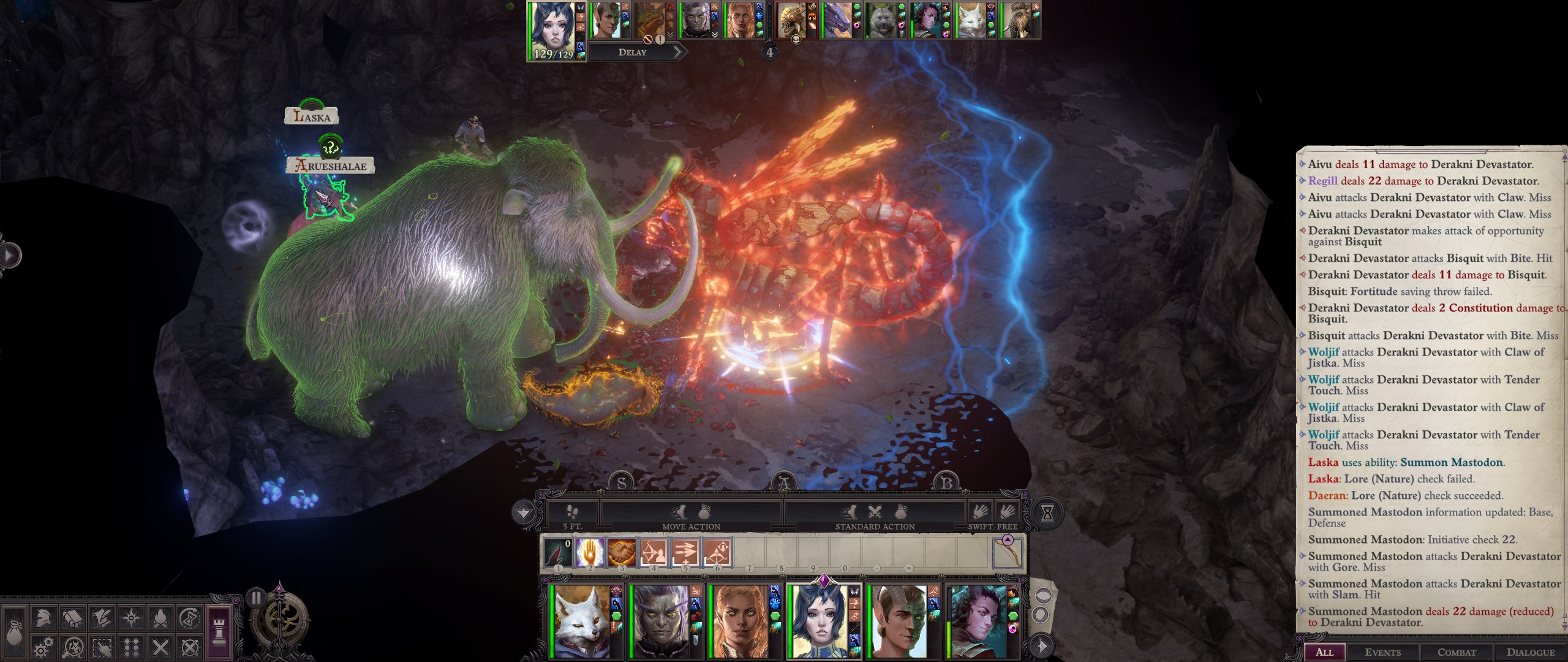
Okay, let there be a comma. Because there are still many wonderful “features” in the game.
For example, companions. There are many of them, more than a dozen, and each has their own story, their own long personal quest. Each of them joins the main character for the sake of their own goals. Nenio, the researcher who wants to compile an encyclopedia of everything that exists in Golarion; young and slightly crazy witch Ember, who has already been to the stake; refined aristocrat and healer Daeran; carefree rogue tiefling Woljif; intelligent and talking wrist-weapon Finnian, who considers himself human…
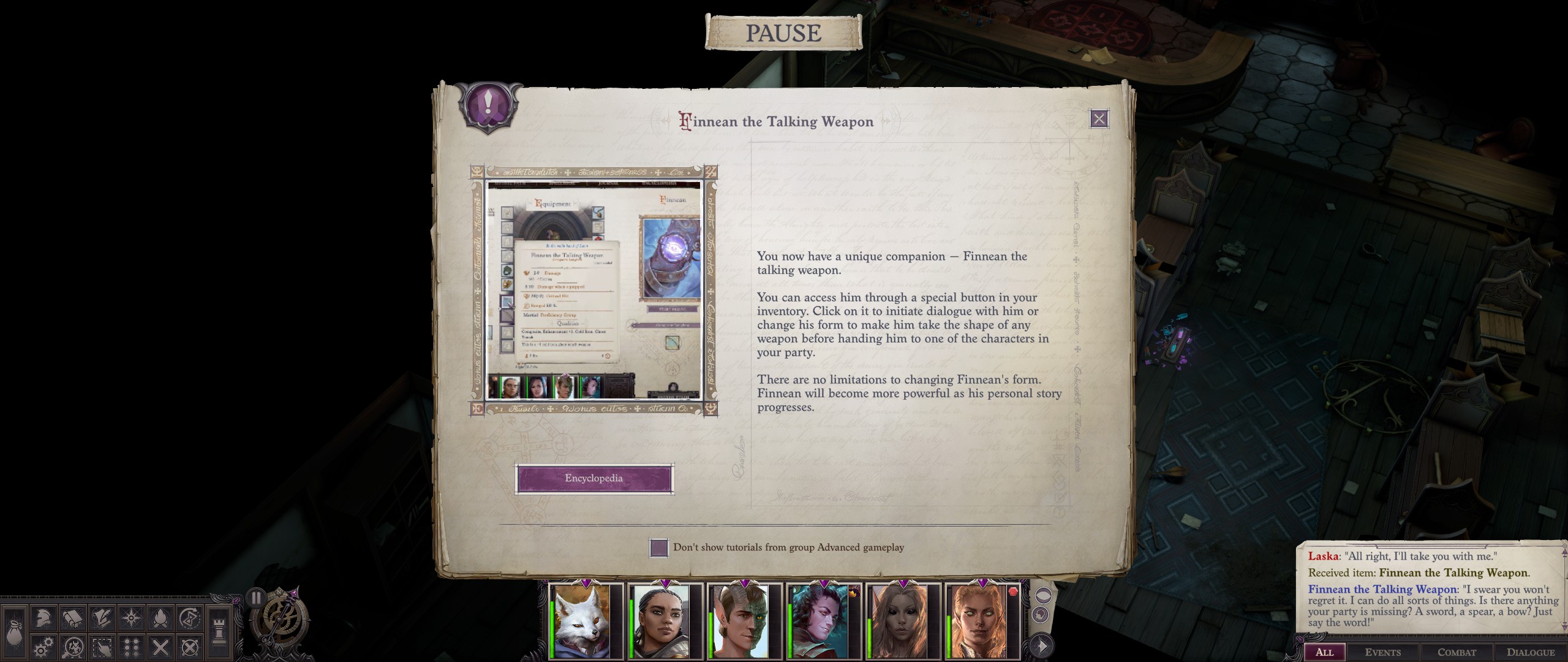
A diverse company is gathering. And they are very talkative – each of them always has something to say about the surrounding madness or unfinished task.
During breaks, these guys discuss the weather, exchange banter, and encourage each other. Ember prepares food, Daeran suggests ideas for experiments to Nenio, repentant succubus Arusha prays for the night, and the hired dwarf assassin Greybor prepares to stand guard.
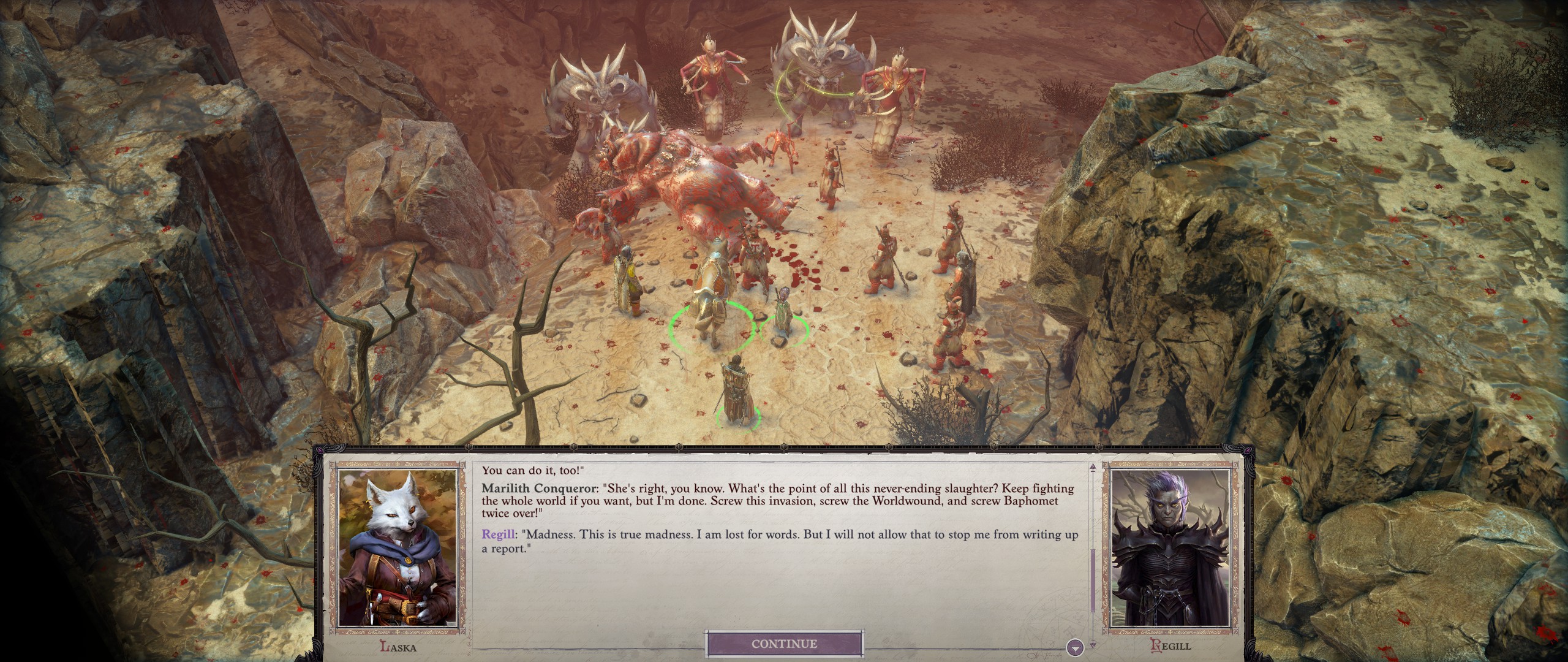
Of course, they all have different worldviews – from law-abiding good to chaotically evil, the full range. And not everyone will agree with your “choice of path” (remember Baldur’s Gate 2 and the conflicts between party members – for example, Viconia and Aerie?). But with proper diplomacy, many will stay with you until the end. My favorite companion, for example, turned out to be the lawful evil gnome Regill, by profession – a Hellknight, a classic warrior-inquisitor who values discipline and the destruction of demons above all else. Regill is hardly surprised by anything, knows exactly what he wants, and seeks no justification for himself or anyone else.
Who asked about romances? There are romances! Of any gender, to suit any taste.
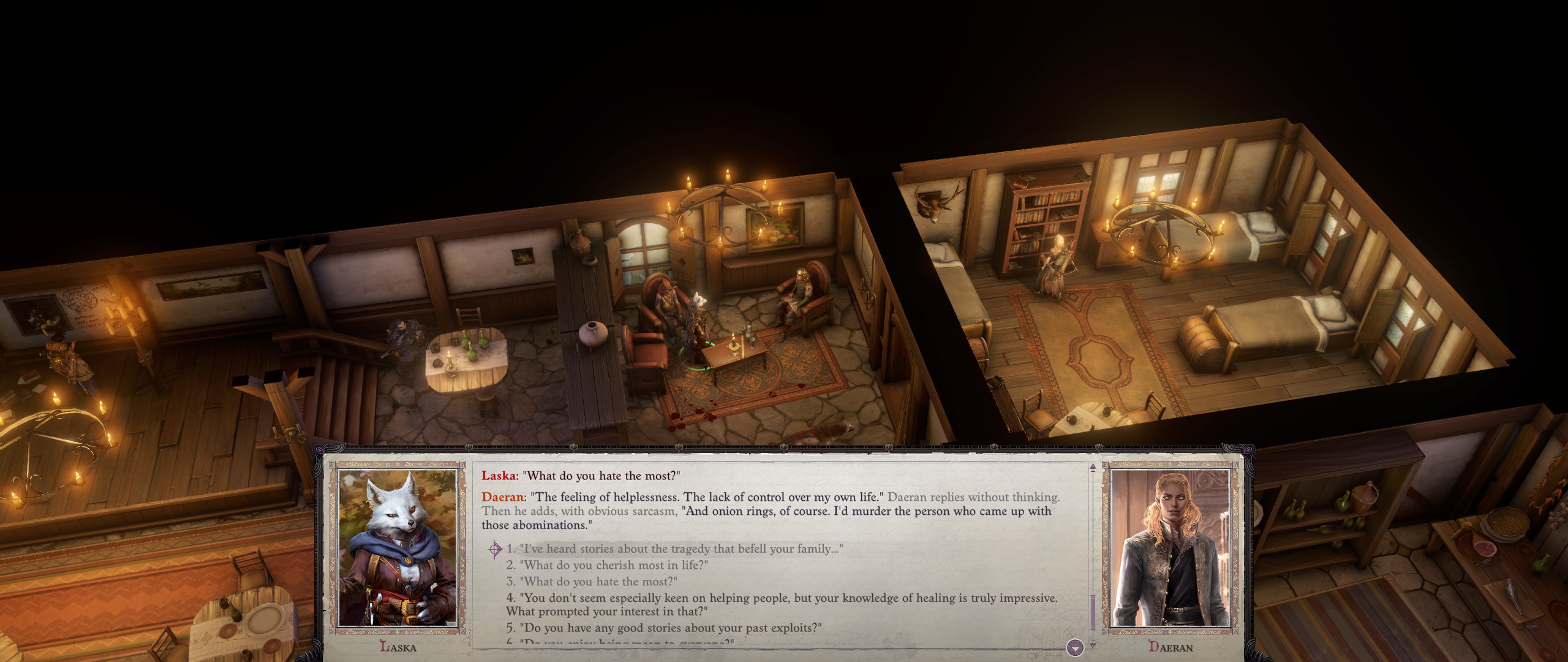
The plot is deceptively simple at first: it takes place on the fantasy planet of Golarion, not far from the so-called Worldwound, a massive magical rift in the earth. The Wound, a breach in reality between worlds, appeared over a hundred years ago, burying the kingdom of Sarkoris. In the vicinity of the rift, reality begins to change in strange ways – bloody rains fall, beasts mutate, transparent crystals grow from the ground. And most importantly – this breach leads to the Abyss, the stronghold of demons. Of course, over the course of a hundred years, the invaders from the Abyss, ruthless and bloodthirsty, have flooded the plain.
The main state opposing the demons is Mendev. The Queen of Mendev, blessed by the goddess and warrior beauty Iomedae, has already led four Crusades against the demons, but each one ended in failure: the enemies were stronger. But as long as the cities of Mendev are guarded by the Stone Sentinels, another gift from the goddess, the inhabitants can sleep peacefully – the demons will not come to their doorstep. Or will they?
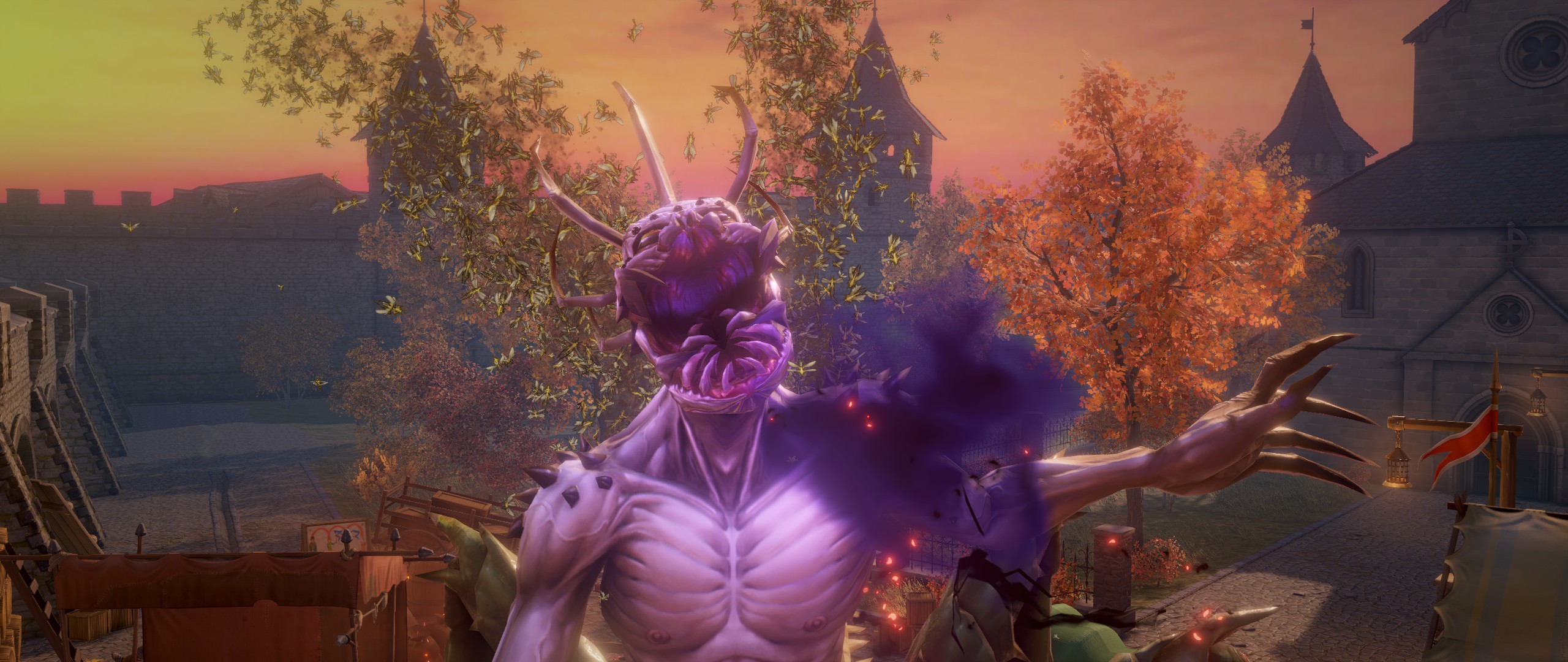
So, the time of action is a century and a bit after the emergence of the Worldwound, the place is the border city of Kenabres. There’s a celebration, a fair, you can join the revelers, have a drink, watch performances. But in the midst of the entertainment, from the sky (literally), the demon lord Deskari falls, resembling a humanoid locust. With one swing of his enormous scythe, he beheads the silver dragon Terendelev, the city’s defender.
In a matter of minutes, a gang of demons turns Kenabres into burning ruins. A mad hopeless battle, escape, a swift fall into the chasm beneath the city, searching for other survivors, attempting to gather resistance and unite to see the next dawn… By the end of the first act of the game, our bewildered hero finds themselves leading a new Crusade – the fifth one.
No, this story won’t be the basic “we’re good, they’re bad, an organized crowd of flawless white cloaks going to kill evil”. Of course, you can play the situation like that, but it’s just one of the options. We will learn the reasons for the emergence of the Wound, the history of the fallen kingdom of Sarkoris, converse with demons and angels, make numerous choices.
And in the end, of course, we will successfully finish the Crusade… but there are many different ways to do it. And some of them are not at all kind, quite the opposite.

In the previous game of the series, Pathfinder: Kingmaker Unfortunately, I haven’t played (yet!). But judging from the screenshots, the game doesn’t seem to have changed much visually. There are graphical improvements, and you can freely rotate the camera. Visually, WotR is a classic isometric RPG, reminiscent of Baldur’s Gate and Pillars of Eternity.
The combat system is also classic, familiar from BG. Real-time with pause. But that’s not all: in WotR, you can switch to a fully turn-based mode, similar to the system in Divinity Original Sin. If real-time combat is too fast, chaotic, and uncontrollable for you, slow-paced turn-based combat will be your choice! Personally, I find it easier to deal with small enemies in real-time, while for tougher bosses, a calm and measured approach, considering every moment, is more suitable.
The game is based on the rules of the Pathfinder tabletop game, so dice are used to determine skill checks both in combat and outside of it. Virtual dice, of course. Sometimes it can be annoying (critical failures if you roll a one), and you might want a more stable system, but there are advantages to the “rolls” as well.
Dice add excitement, the possibility of luck and failure in battle. In the end, the necessary skills will still be exceptional, so there will be a chance to “pass a check with a result of 101%”.
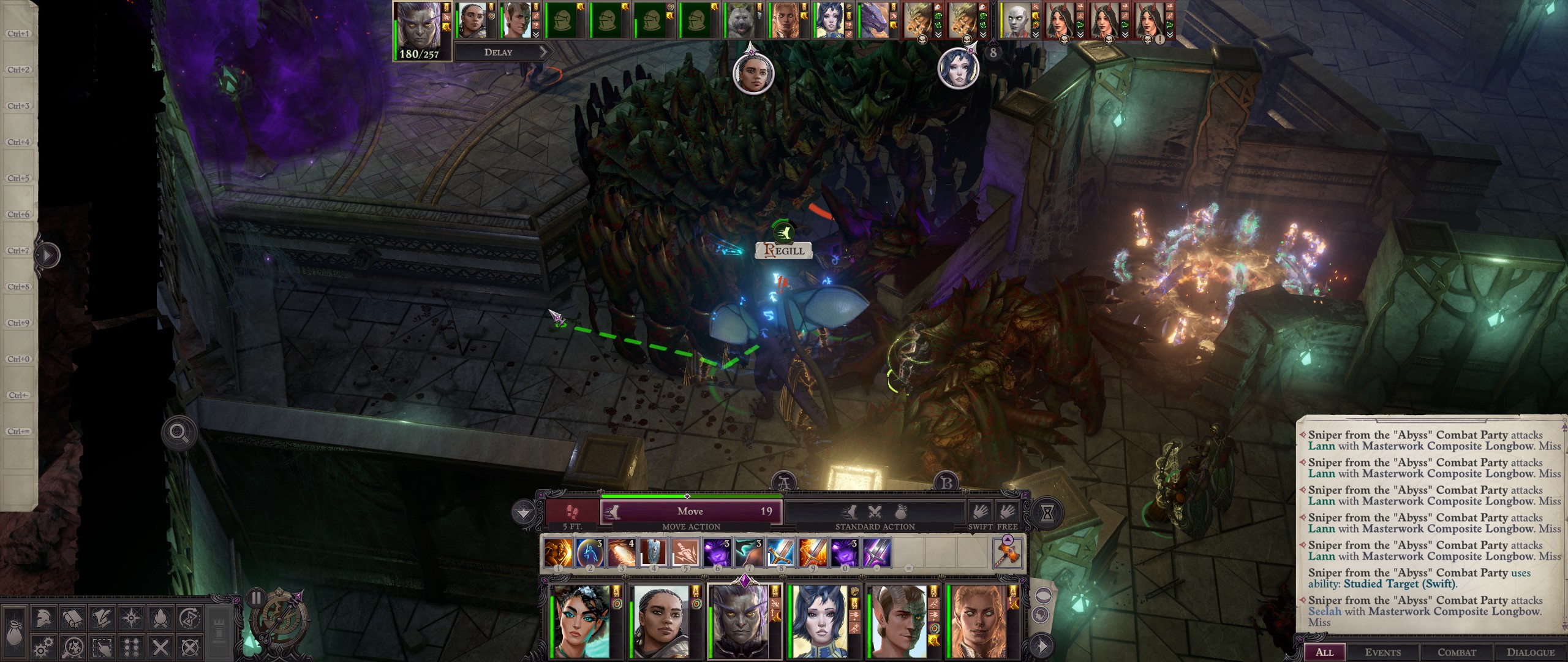
The game is huge. Even at the very beginning, you can get lost in the abundance of locations – and in the first act, we only have access to the city of Kenabres! Starting from the second act of the game, we crawl out of the city walls – and see the boundless world. Lots of places, lots of quests, some strategic points that need to be taken back from the demons first. All the places are unique and recognizable at first glance: forests in the north, cracked stones in the south.
Closer to the Abyss, there is often a bloody rain – not dangerous, but it makes you quite nervous. The ruins of Sarkoris are protected by metal doors and dangerous traps; a trading caravan, controlled by a living skeleton, travels through the wastelands; the small town of Wintersun, lost in the thickets, harbors practically Lovecraftian madness.
And when we finally reach the very edge of the Abyss and step inside… Wow!

In WotR, there are many difficulty options, you can customize any aspect of the game to your liking. Enemy AI, damage dealt, frequency and strength of critical hits. You can even put companions and even your own character on auto-leveling if you’re too lazy to choose features and skills yourself. (But why? That’s the most interesting part!).
For the laziest ones, there is the Story difficulty, where almost all enemies are “clickable” automatically, and for the most persistent ones – the Last Azlanti mode with only one save, if you die – you lose. So both seasoned veterans and green beginners will be able to enjoy the game.
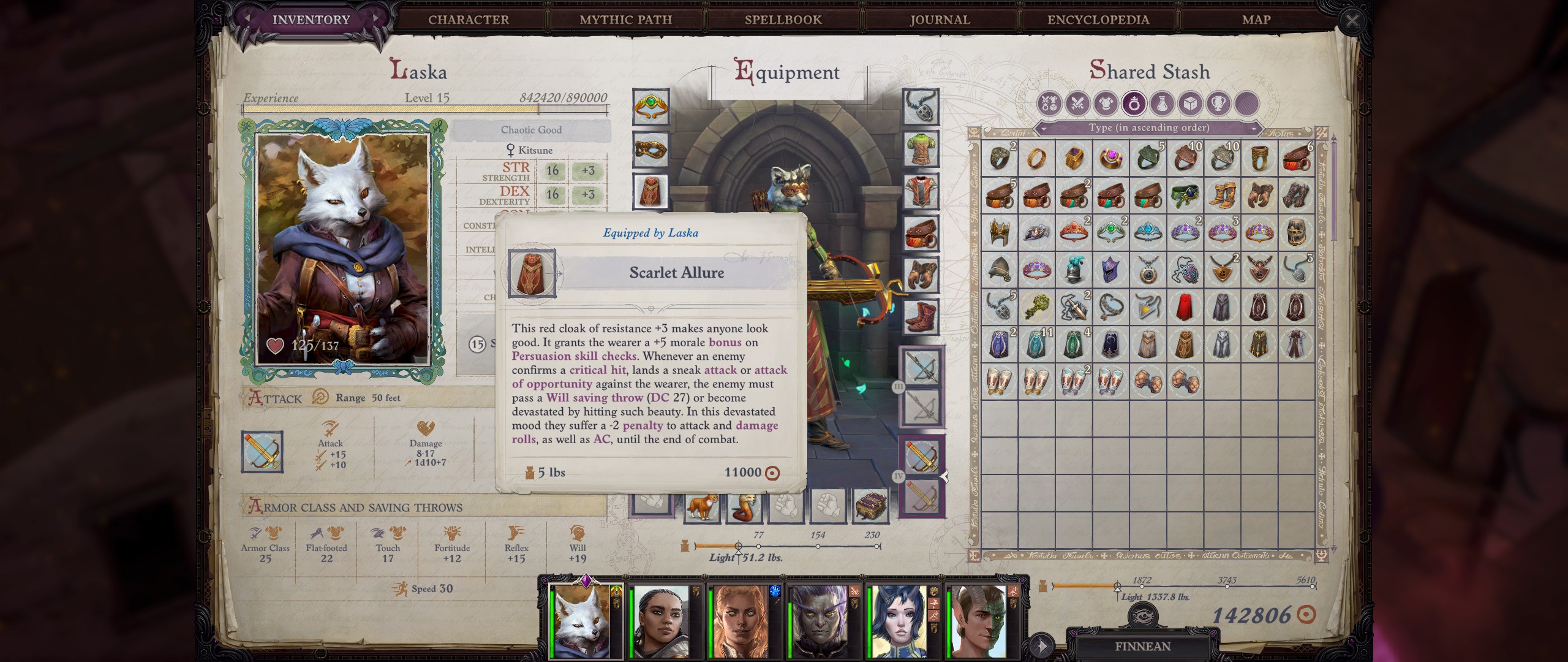
Let’s talk about the mysterious Mythic Path. Our hero becomes the leader of the Crusade, not least because he possesses strange talents: whether divine or devilish, no one knows for sure. Only the hero himself can understand what he wants from life and choose his own path. And each choice, in turn, will change him.
You can renounce all powers, acknowledging yourself as mortal and one among many, a person capable of defeating the supernatural. This is also one of the paths.
Do you want to maintain world harmony? With a smirk, change the laws of logic and common sense? Reject the shackles of fragile flesh and become the ruler of the undead? Welcome to WotR.
And have you ever wanted to play as a reasonable and perpetually hungry swarm of insects? No-nothing, I just asked.
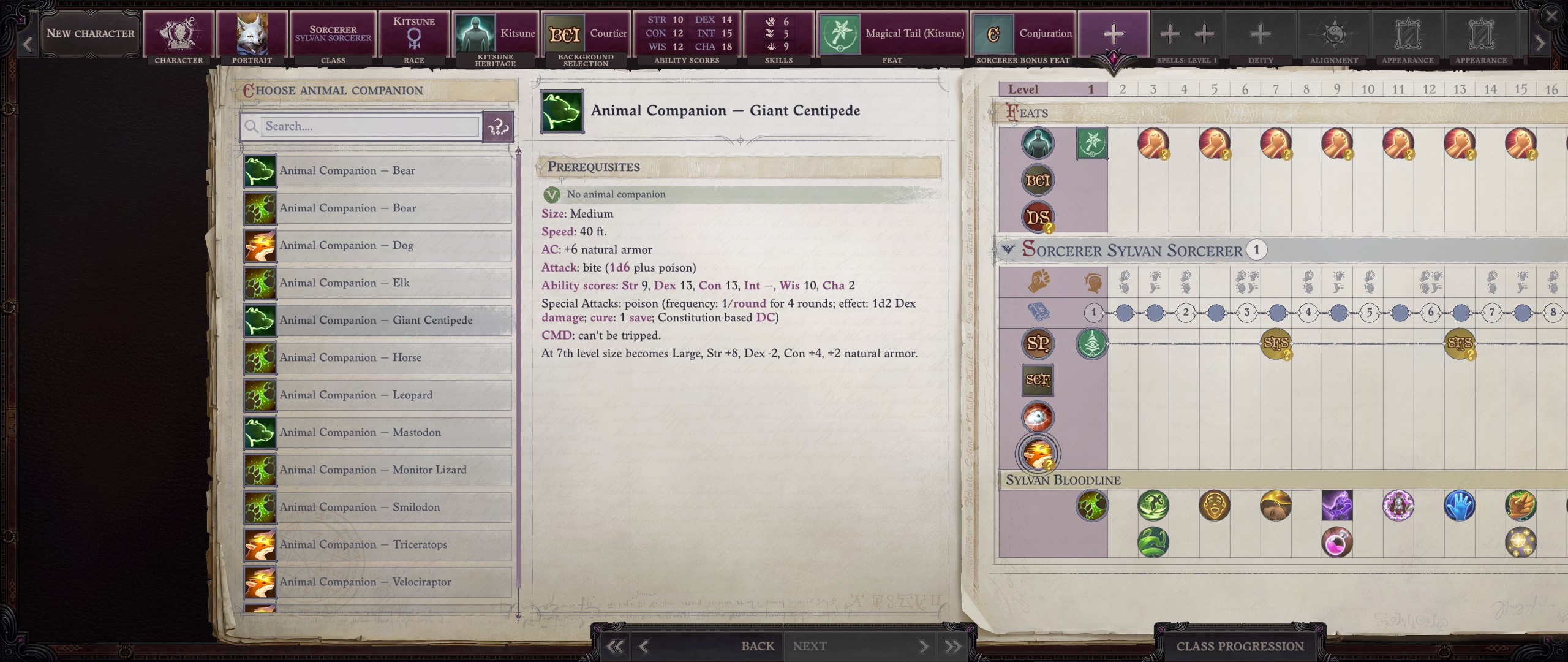
Perhaps the only thing I didn’t really like about the gameplay was the mechanics of the crusade itself. In addition to our company, troops – both ours and allied – move around the map, and our task as the campaign leader is to achieve a strategic victory.
Nine out of ten Russian-speaking gamers (especially those who are older) know and love Heroes of Might and Magic 3. It’s not surprising that Owlcat decided to mix RPG elements with these very Heroes instead of managing a kingdom, as in the previous game. There are units gradually accumulating in cities, which can be assembled into armies. You can hire generals for the army and go raiding caravans, I mean, crushing enemy armies and outposts.
You can also upgrade your own city – build various barracks, towers, and inns there. The most useful building is the teleportation circle, which allows you to instantly return to the capital from any point on the map; later on, you will be able to place such circles in distant garrisons as well.
There are no mines, various buildings, or treasure chests that were present in Heroes, though. Treasures are mainly obtained from enemy armies. Resources gradually accumulate on their own, and the speed of their acquisition can also be improved. It is not possible to assemble an army of multiple units: a force without a general can only have three squads, while with a general, it can have more. Your brave commanders learn spells and passive abilities to strengthen the soldiers. There is an auto-battle function, as well as an auto-everything function – in other words, the strategic part can be completely disabled, and you can focus only on the RPG aspect.
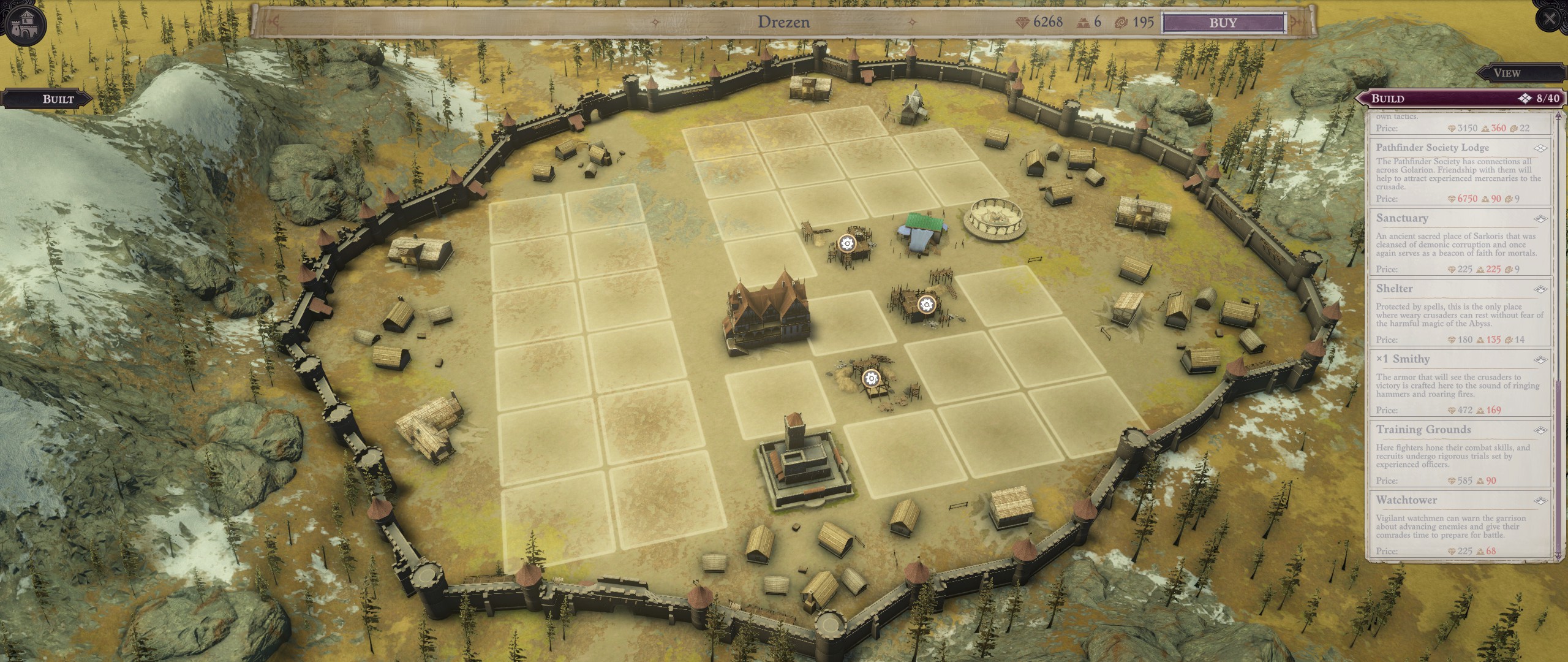
It would seem that beauty, live and rejoice. But then comes the predictable “but”.
But – the implementation of something like “Heroes” is inconvenient. Auto-battle calculates battles completely illogically, sometimes a huge army of the tenth rank inexplicably loses to enemy scouts of about the eighth rank. If you switch to manual combat, you win – but then you have to click moves seventy or even a hundred times, because the troops deal criminally low damage; you can kick some harmless but thick-skinned demons for a long time and tediously. There is no special tactics in selecting troops: gather a crowd of elite units – and forward.
There is an interesting city and campaign management, implemented in the form of cards: new tasks constantly appear, diplomatic choices are made, broken artifacts that can be restored are found. Choosing options and feeling like a well-thought-out strategist is interesting. But the battles don’t get any better. In the end, the only thing that saved me was the general, heavily leveled up and able to destroy enemies on approach with fireballs, even with a tiny army.

It seems like a double-two, why not turn off all these gimmicks and play in “RPG only” mode?
It’s not possible. Unfortunately, automatic control of the crusade is like autopilot from home to the bakery in the morning, if you didn’t go to bed at all at night and played until dawn… in the third Heroes, yes. It will achieve the goals, but not immediately, and it won’t complete any side quests. Side quests are those very projects, elections, and artifacts for merging. And without them, it is impossible to complete some key storyline tasks and branches. It’s a dead end.
I have to control it myself. Fashionistas are saving the Nexus. For example, one of them allows you to automatically win all battles, absolutely all of them. Another, more advanced, is essentially a save editor.
Cheating? No cheating at all. Right after the release, for example, at a certain point, the morale of the fighters started to drop, and it was impossible to raise it by any means (a glitch with invisible enemy troops attacking the city). Only the editor helped. Now the game has been thoroughly patched, simplified campaign control options have been added, the glitch is gone, but there are still bugs.
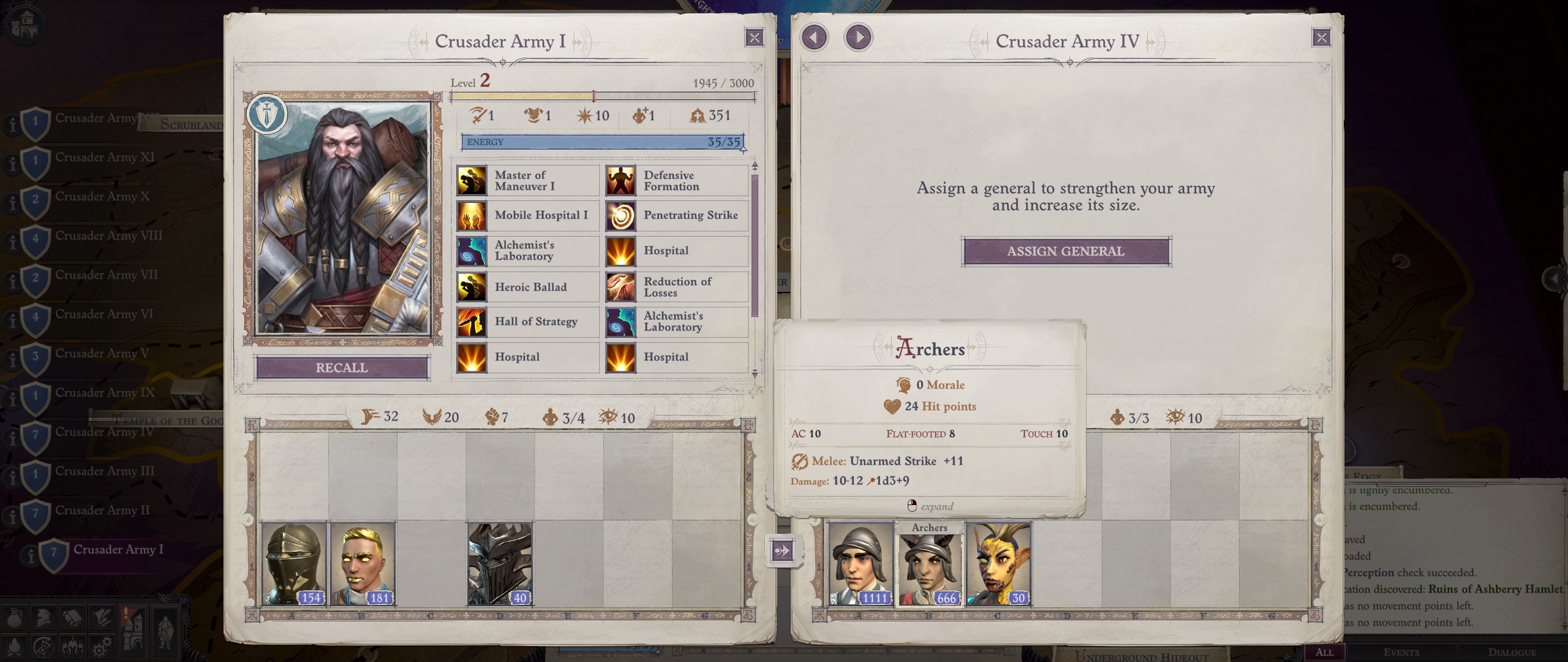
And not only in the Crusade. The game was tested by beta testers before release, but only the first three acts. That’s why there are fewer glitches in them (but they still occur, I sent a message about at least two dozen). After the third act, and especially after the fourth act, the number of bugs and glitches increases, a couple of times I had to use the same editor to add something necessary that disappeared from the inventory or to see the results of dialogue branches.
Owlcat is really trying to polish WotR – there have already been many substantial patches, and that’s in less than a month! The fate of Cyberpunk 2077 definitely does not threaten the game, the main holes have been patched, but there is still a lot left. Therefore, I would advise cautious players to wait for six months to a year until the code is thoroughly cleaned up.
But if you have a spirit of adventure in you – start right now! Reporting controversial moments is very easy – just two buttons in the game. And some glitches can be quite amusing. For example, for half of the game, a squirrel appeared out of nowhere and followed my fox-Commander throughout the plot. I didn’t have an item that activated a squirrel pet, I didn’t have a familiar, but this agile creature always accompanied my fox-Commander in all the corners of the story. I called him Muad’Dib in my mind.

The game is magnificent, no jokes. RPG lovers who are concerned about the final release of Baldur’s Gate 3 – you will have something to do! It has everything we’ve been missing: a story, loyal friends and sworn enemies, style, atmosphere, millions of choices. Creating your own potions, a bunch of scrolls with spells, a variety of weapons and character builds. Impressive, vibrant, and exciting battles.
Beautiful music. Beautiful voice acting (in English). Good Russian text (after all, we remember that WotR was released simultaneously in Russian and English?). Wonderful special effects and cutscenes for an isometric RPG.
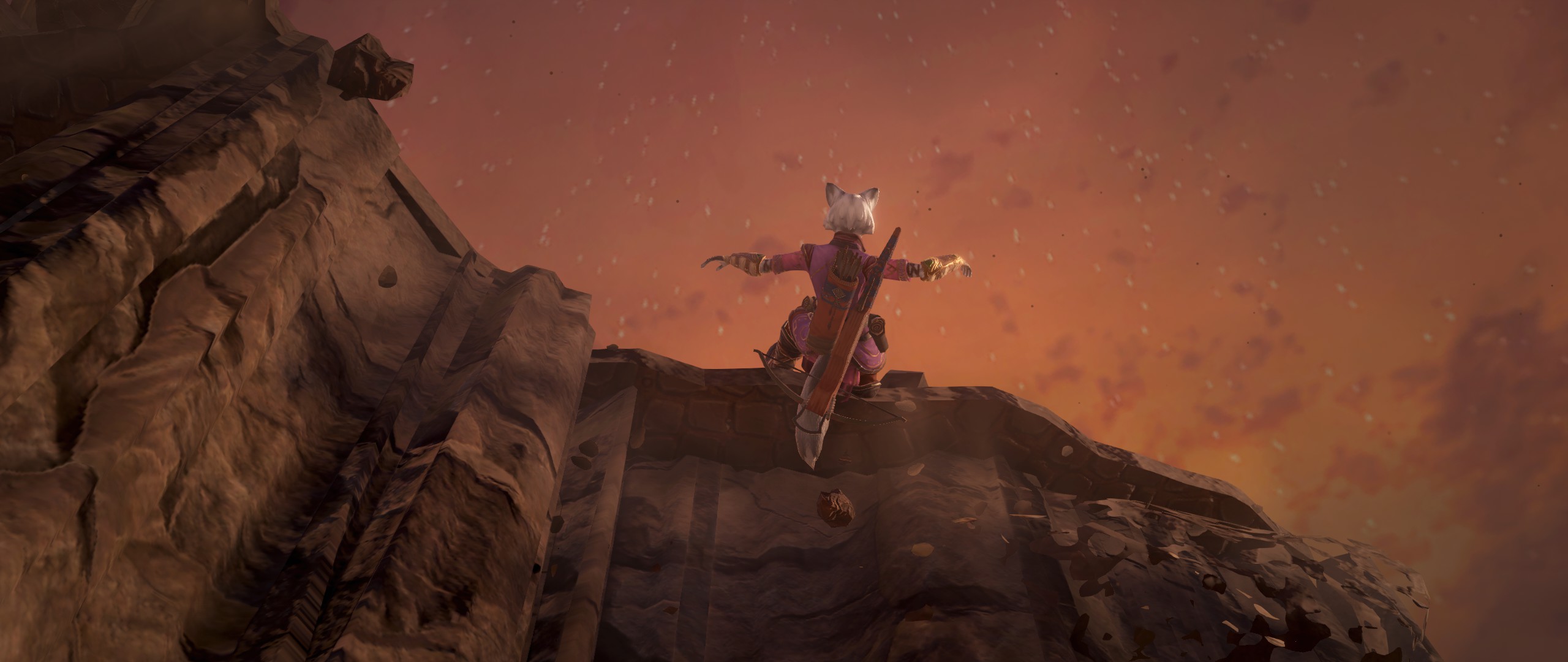
Considering the release of BG3 – Wrath of the Righteous, it can confidently be called the RPG of the year.
Share
Discuss
More Reviews



